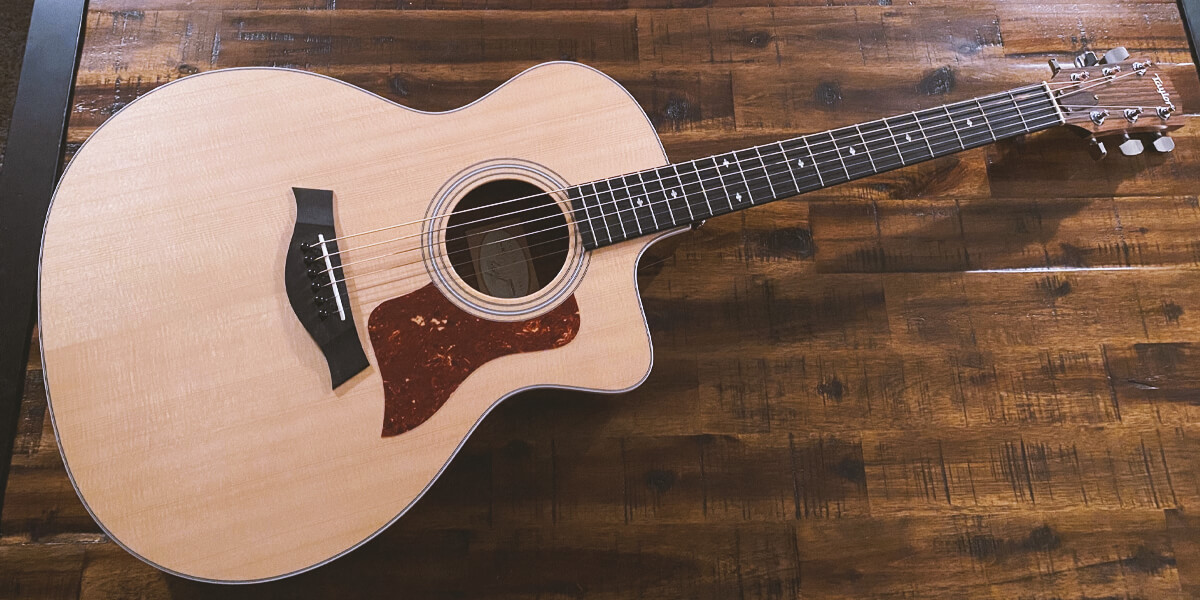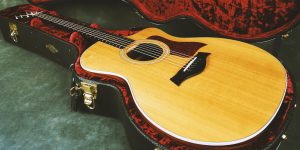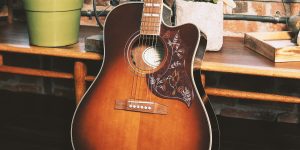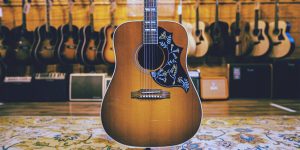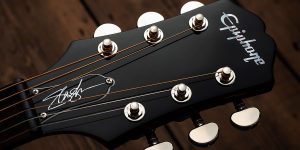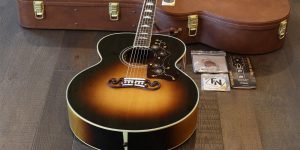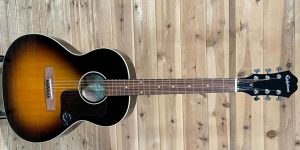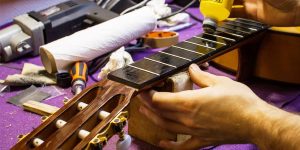Fingerstyle is one of the most popular guitar styles today, accompanying different genres of music. So in this article, I took the liberty of helping you choose the best acoustic guitar for fingerstyle. And before we get started, here are a few words about this technique.
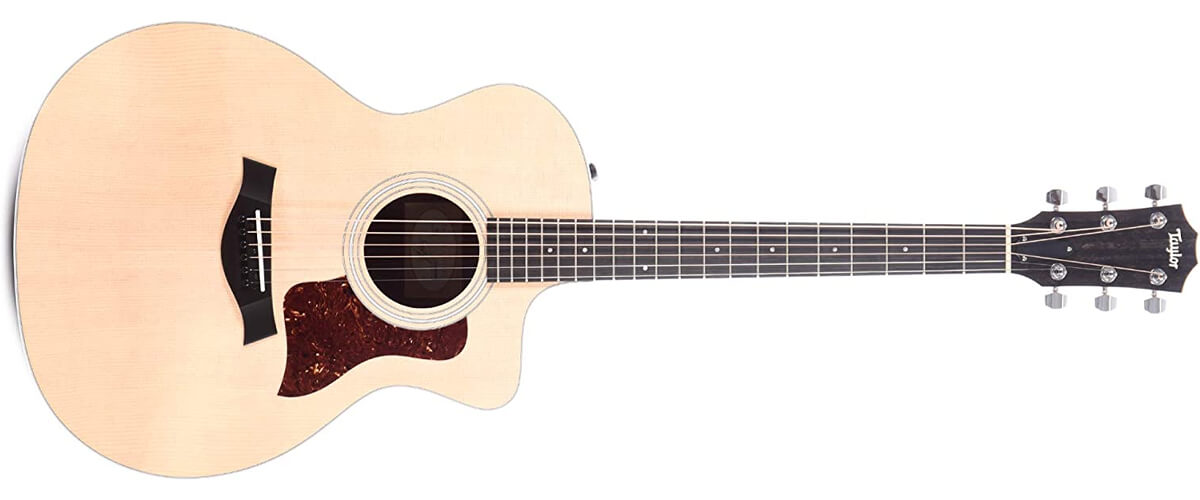
So, fingerstyle is finger or plectrum strumming other than chord playing. It implies a smooth performance without aggression, creating a composition melody. The technique has its roots at the beginning of the last century and can be found in such genres as blues, jazz, country, flamenco, of course, and many others.
Acoustic guitar for fingerstyle comparison table
| Guitar | Scale, in/cm | Fretboard radius, in/cm | Neck joint | Detailed review |
|---|---|---|---|---|
| Taylor 214ce best overall | 25/63.5 | 16/40.6 | glued-in | Review |
| Yamaha C40II beginner fingerstyle guitar | 25.9/65 | 14.9/37 | glued-in | Review |
| Martin LX1 best Martin guitar for fingerpicking | 23/58.4 | 16/40.6 | glued-in | Review |
| Cordoba C4-CE | 25.6/65 | 9.1/24.1 | glued-in | Review |
What to look for in a fingerstyle guitar?
Much of the choice of a guitar depends on the preferences and habits of the performer. But still, it is possible to allocate some recommendations on the characteristics of a guitar for fingerstyle performance. So, when choosing a fingerstyle guitar, pay attention to the following parameters:
Nut Width and string spacing
The width of the threshold determines the distance between the strings of each guitar. And obviously, for maximum fingering comfort, it’s better to choose guitars with more distance so you can hit each string clearly. Today’s most popular and universal size is 1 11/16″ (43mm). It can be found on electric guitars and acoustic ones. But there are also larger sizes, which you will see in this selection of guitars. I’ll note this fact separately.
Skyle length
It is also quite obvious that the strings should have a low tension. After all, you have to play each note individually. So guitars with a larger scale are not suitable for this style. Unless you like to build up huge grooves and experience pain. I don’t think so, no. And even though the first thing that comes to mind is using a shorter 24.75″ bore, that’s not really the case. My optimal recommendation is the standard 25.5″ size. However, in my review, I listed the instrument with the minimum one. Still – you should have a choice.
Tonewood
And finally, the material of the top of an acoustic guitar (of course, you should also consider the thickness and the way the top is mounted). It has a huge impact on the instrument’s tone and resonance, and first of all, like everything else, it depends on the musician’s preferences. Still, I consider the best tonewood for fingerstyle guitar to be Spruce. Why? Because of its versatility and tonal qualities. It is the most common material, has great color, and Spruce does not lose its qualities over time. The sound of these guitars is clean, simple, yet powerful, deep with some overtones and a wide range so that the instrument feels great and organic in any style.
Best acoustic guitar for fingerstyle reviews
Taylor 214ce – best overall
In my Taylor 214ce review, I'm going to tell you about a guitar that I have a lot of positive feelings about. I will praise it in the article, but I will try to build the review objectively so everyone can conclude. You can compare this model, perhaps, with another Taylor 114ce. They are similar in many ways, but some differences, in the end, make the instruments sound different, and that is what we will pay attention to. Well, it's time to get started!
Body

The shape of the Taylor 214ce resembles a Dreadnought, but it is actually a Grand Auditorium with a tapered waist. This shape and elegant Venetian cutaway provide incredible comfort and easy access to the high registers. The top is made of solid Sitka Spruce in a lovely light shade. And it is adorned with a plastic Rosetta consisting of three rings and a Tortoise Pickguard that gives the guitar an upscale look. And a white edge binding completes the design. All in all, I'm thrilled with the way it looks.
The material of the sidewall and back of the guitar is Layered Rosewood. And that's exactly what sets it apart from the 114ce model, which has those parts made of Laminated Sapele. And it's this substitution that makes the 214ce sound different. For example, it sounds brighter and has more pronounced treble and bass. In comparison, the 114ce wins in the mids. All in all, it just depends on your taste in tonality here.
In addition to all of the above, the kit comes with a soft gig bag for protection during transportation. A nice bonus. By the way, it is also very stylish: made in beige with Taylor embroidery and a comfortable handle for carrying.
Neck, fingerboard, headstock
This stunning maple fingerboard has a West African Ebony overlay and a scale length of 25-1/2". It's so great because it's incredibly comfortable to hand. Speed playing that's what I love, so I always test the fingerboard first. And this one is very good. It's worth noting here that the guitar has 20 frets.
The NuBone nut is not optimal, but upgrading it won't cost much if you decide to do so. Its width is the standard 1 11/16″, and I enjoyed playing it.
As for the factory tuning of the guitar, there was none. So I had to tune it out of the box. That said, the procedure is simple, with the proprietary Taylor Die-Cast Chrome Tuners sealed tuning mechanism providing smooth action and high accuracy. But after that, it held the line just fine for a long time, although I was pretty hard on it.
Sound quality
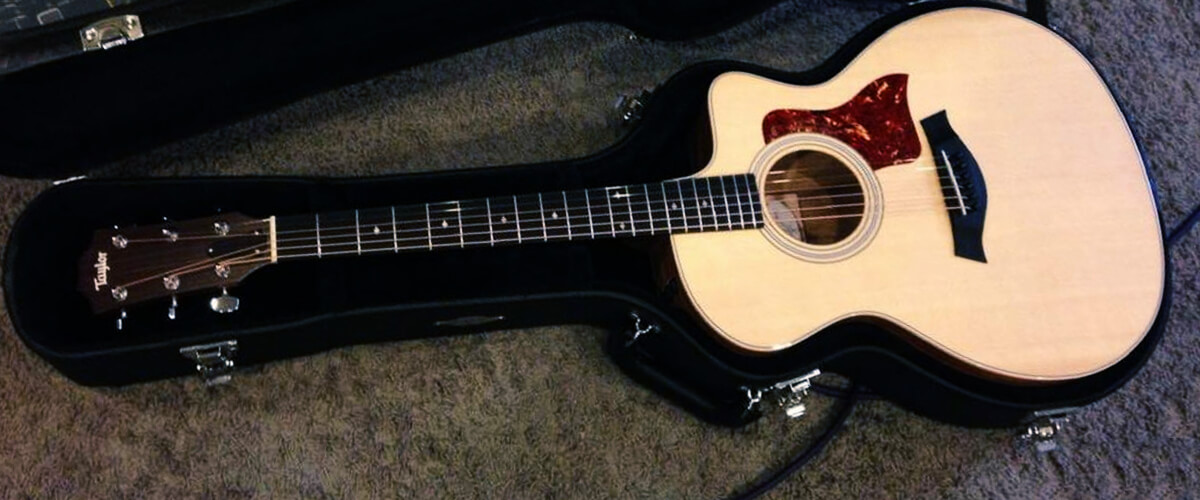
Well, we've got the design and playability figured out, so let me tell you how the Taylor 214ce guitar sounds. As I mentioned earlier, comparing this model to the 114ce, the guitar's overall tone is bright and voluminous, with good volume to fill a medium-sized room. Great treble and bass and a little bit of sagging in the mids. I don't classify this as a flaw but more of a taste. The guitar produces clean notes, and the resonance from the body is luxurious. I would say it has excellent responsiveness, so obedient it was in my hands. Combined with the excellent sustain, I would conclude that this is a guitar for sophisticated musicians.
To complete the overall picture, it should be said that the 214ce is equipped with Expressive System 2 electronics. For those who want to use an amplifier, I hasten to report that the guitar did not lose its original acoustic tone in the sound but continued to sound just as natural. These electronics are very good quality, so with all the components, I was not surprised by the instrument's price, and I think the guitar is worth every penny!
Key specs
- Scale, in/cm: 25/63.5.
- Frets: 20.
- Fretboard radius, in/cm: 16/40.6.
- Type: acoustic/electric.
- Body material: rosewood.
- Neck material: mahogany.
- Neck joint: glued-in.
The best Taylor guitar for fingerstyle is the 214ce. In all of its parameters, it meets the stated standards. It is a Sitka Spruce Top, 1-11/16″ Nubone Nut, and 25-1/2″ Scale Length, which means it will provide optimum playing comfort. As for the tone, it’s bright and voluminous, though not overly loud. The treble and bass sound is crisp, and the resonance and sustain will leave you thrilled.
Yamaha C40II – beginner fingerstyle guitar
If you're looking for a quality entry-level guitar, my Yamaha C40II review will be helpful for you. Yamaha knows how to make music, so even with inexpensive models, you can find details that put the company's products at the top of the ranks among competitors' models of the same rank.
A full-size acoustic instrument (without electronics) offers us quality worthy of the legendary brand, attractive design, pleasant surround sound, and versatility at an extremely affordable price. Any beginner would be proud of such an acquisition, and for more experienced players, the guitar can serve as an additional/replacement guitar in the collection. So let's take a closer look at it.
Body
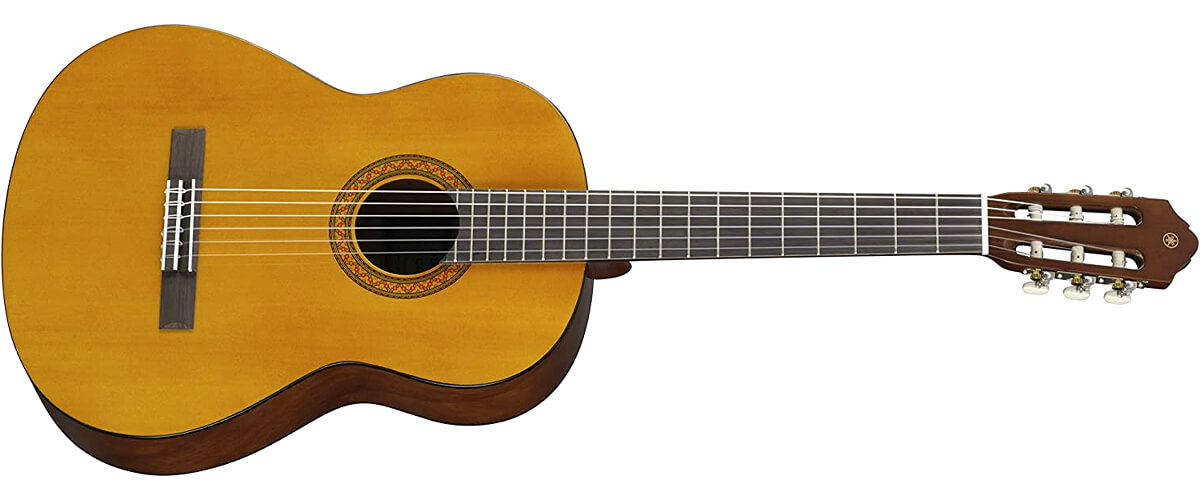
The guitar is a Classic guitar and does not have a cutaway. It is very lightweight, so it is easy to carry to class, take on trips, or use at home. The top is made of Spruce, so despite the apparent economy of materials, the guitar has a great warm tone. The sides and backrest are made of Locally Sourced Tonewood. In this case, it's Meranti plywood, a type of Mahogany. The whole surface is Gloss, shines beautifully in the light, and is resistant to external influences. And a very nice ornamented Rosetta completes the image, by which you can recognize this model. I liked the guitar's look, and it didn't seem cheap, though I would treat it carefully. There is a feeling that its coating is not very resistant to impact, although the construction itself is quite sturdy.
To conclude the design description, perhaps we should mention the Rosewood Bridge, which fits perfectly into the overall image. And also the nylon strings, which are ideal for beginner players.
Neck, fingerboard, headstock
The neck of the Yamaha C40II is classic, very comfortable to hand, and definitely suitable for those who are just starting their way as a guitarist. It is made of Nato and has a Matte finish. The Rosewood pad is dark and blends nicely with the overall style, but it has no markings for some reason. It was a surprise for me. If a manufacturer positions the model as an entry-level one, why didn't they make it easier for a beginner to navigate on the fingerboard? Of course, one can get used to anything, but that's strange.
There are 18 frets on the 22.8" scale. It is a normal amount for a classical guitar, but access to the upper registers was very convenient despite the lack of a cutaway.
I like the headstock guitar. Made in the Spanish style, it fits perfectly into the design. It has Urea nut and beautiful and reliable chrome pearloid tuners (RM-1252X), which is good for such an inexpensive model. The guitar sounded pretty good out of the box, but I tried the tuners anyway. They are soft and hold the tuning well, although such things should be tested over time.
Sound quality
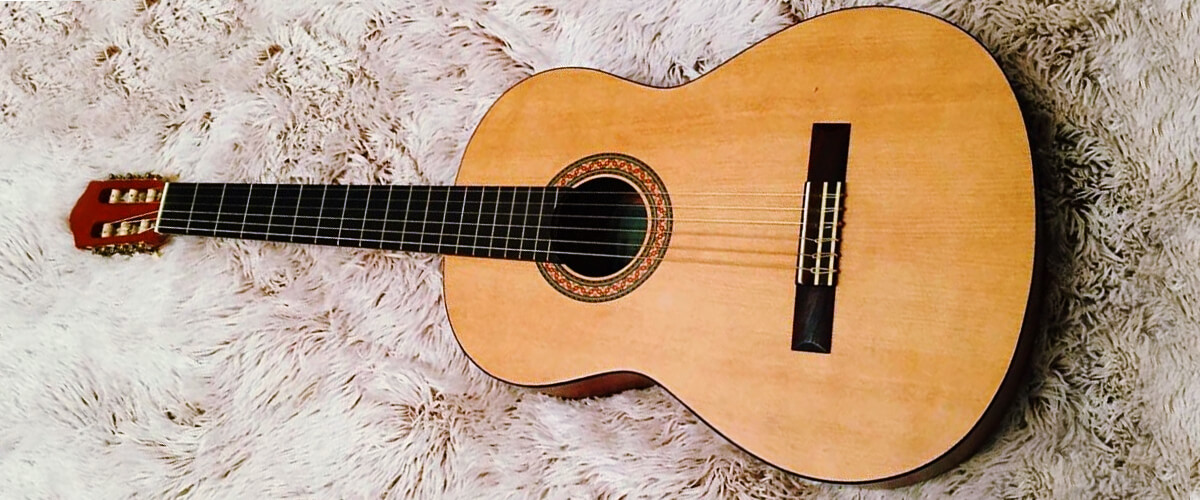
All that's left to say about the Yamaha C40II sound. Well, as I said before, it is made of simple, inexpensive (but reliable) materials, so it will not give you the sound of natural wood. But its sound is nice and voluminous, though not deep and powerful. I don't think this is a drawback if we talk about an entry-level guitar. While playing, the resonance was good, and the notes sounded smooth and clear. I didn't hear any pronounced high or low frequencies, and everything was smooth and soft, which is not surprising for nylon strings.
Key specs
- Scale, in/cm: 25.9/65.
- Frets: 19.
- Fretboard radius, in/cm: 14.9/37.
- Type: acoustic.
- Body material: tonewood.
- Neck material: tonewood.
- Neck joint: glued-in.
I consider the Yamaha C40II particularly suitable as a beginner fingerstyle guitar. It also has a matching 25 9/16″ Scale Length and Sitka Spruce Top, but at a much more reasonable price. And the Urea Nut is 2 1/16″ (52mm) wide, so if you’re looking for a guitar with a wide string spacing, this is it. The instrument provides a pleasant sound with no obvious flaws but is certainly inferior to guitars made of natural materials.
Martin LX1 – best Martin guitar for fingerpicking
The Martin and Co popular Series offers us three slightly different models LX1, LX1R, and LXK2. And in this Little Martin LX1 review, I will tell you about one of them. Its distinctive feature is its small size and fairly reasonable price, especially considering the high-quality materials from which the guitar is made. Because of its size, many people call it "travel", "baby", "female", "for beginners", or "for people of small stature", and all these statements are true, but do not state its belonging to one or another side. It is versatile and can suit anyone who appreciates compactness and builds quality. Anyway, enough about that. Let's take a closer look at it.
Body
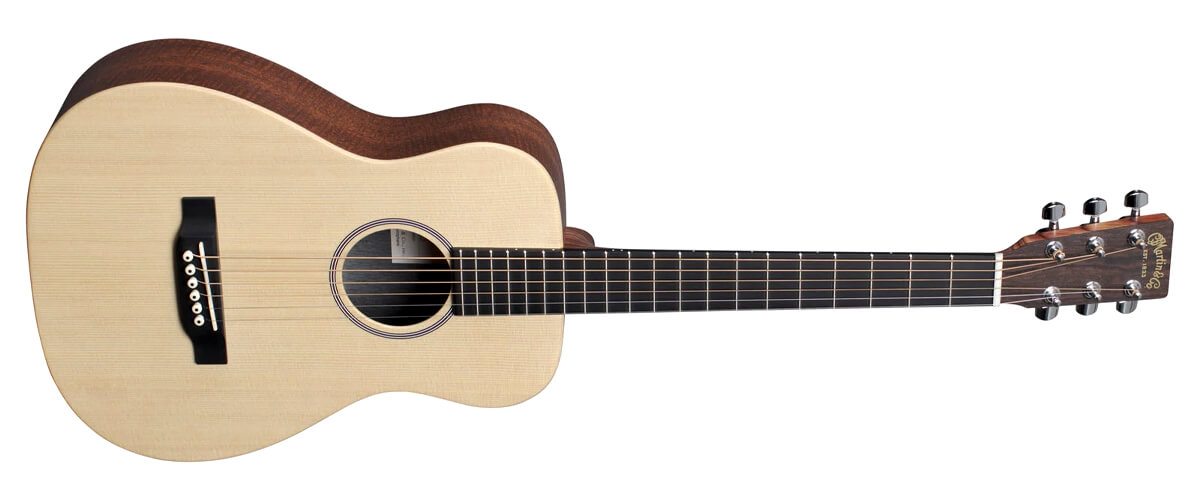
Little Martin gets its name from the ¾ size of a standard Dreadnought guitar. Or, as the manufacturer positioned it, it is the Modified 0-14 Fret size. But, as you can guess from its price ranking, its materials were chosen very decent. For example, the top is solid Spruce with Hand-Rubbed Finish, and the sides and back are Mahogany Pattern HPL. And characteristically, these are moisture-resistant materials that also make the LX1 comfortable for travel.
All in all, the guitar looks very nice, attractive, and stylish in its light color. Of the decor, there is a Multi-Stripe rosette, but there is no Pickguard in this model. They have modifications for the Right and the Left hands.
Of course, the Little Martin LX1 won't give you the projection of a full-size guitar, but it sounds amazing. The structural stability provides a Non-Scalloped X-Brace System. That way, the top-end vibrations are perfectly controlled, and you get the full effect when you play.
Neck, fingerboard, headstock
Let's talk about the neck. First, it is Modified Low Oval, made of Stratabond, a rusted birch wood similar to Mahogany in its resonance properties. The scale is 23'' long, has a total of 20 frets, and at the 14th one, it is attached to the body by the Mortise & Tenon Neck Joint. I found it very comfortable for hands, really suitable for small hands, including children and women. Fingerboard Width at Nut is 1 11/16''. Distinctive are the fret markings, which have been moved to the top edge. You'll have to get used to it if you've already played a regular guitar with standard markings.
Second, the manufacturer used the Richlite material for the fingerboard on this model. It lowered the price and also made a loud statement about attention to the environment. I can't say anything about this material in the sense of how it behaves over time, but during testing, I didn't notice any particular merits or demerits.
The Headstock with the great original label is also made of HPL, but the chrome steel picks pleased me immensely because this guitar level is very good hardware. In addition, it was excellent in the tuning, showing itself soft while holding the tuning perfectly.
Sound quality
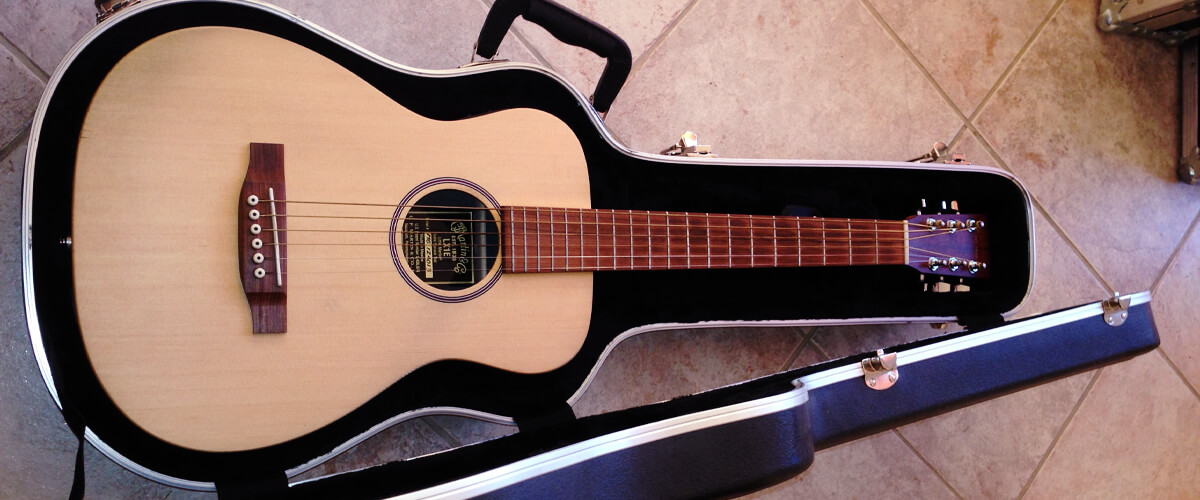
I have already mentioned how the Little Martin LX1 sounds. Yes, not loud and spacious enough, but balanced, nuanced, and very clean. After trying it out, perhaps I join in its high praise by musicians. There is a reason why it is so popular, even among professionals. I imagine its soft sound somewhere by the fire or on the house's lawn during a barbecue party.
I think it's worth having if you travel a lot and like to carry your instrument around because it's lightweight (8 pounds) and will fit on any shelf. The LX1 doesn't have a notch, but I could easily reach the high frets, so I was very pleased with its comfort level. And I can also position it as a beginner's instrument. Considering its price - my high praise!
Key specs
- Scale, in/cm: 23/58.4.
- Frets: 14.
- Fretboard radius, in/cm: 16/40.6.
- Type: acoustic.
- Body material: mahogany.
- Neck material: spruce.
- Neck joint: glued-in.
The famous LX1 with a ¾” body size is the best Martin guitar for fingerpicking. The 1 11/16″ Spruce and Nut top fits the parameters, and the reduced Scale Length of 23″ will make playing even easier and more comfortable. Of course, the guitar is not very loud with this size, but it makes for a warm, clean, and nuanced performance, which is very important for this style.
Cordoba C4-CE
I bring to your attention my Cordoba C4-CE review. The company produces acoustic guitars of different levels, and today I will introduce you to the model of the middle price category. Full-size classical guitar made in Spanish traditions, complete with nylon strings and high-quality electronics, gave me pleasant sensations of comfort, simplicity, and sound. I'm in a hurry to share my impressions with you.
Body
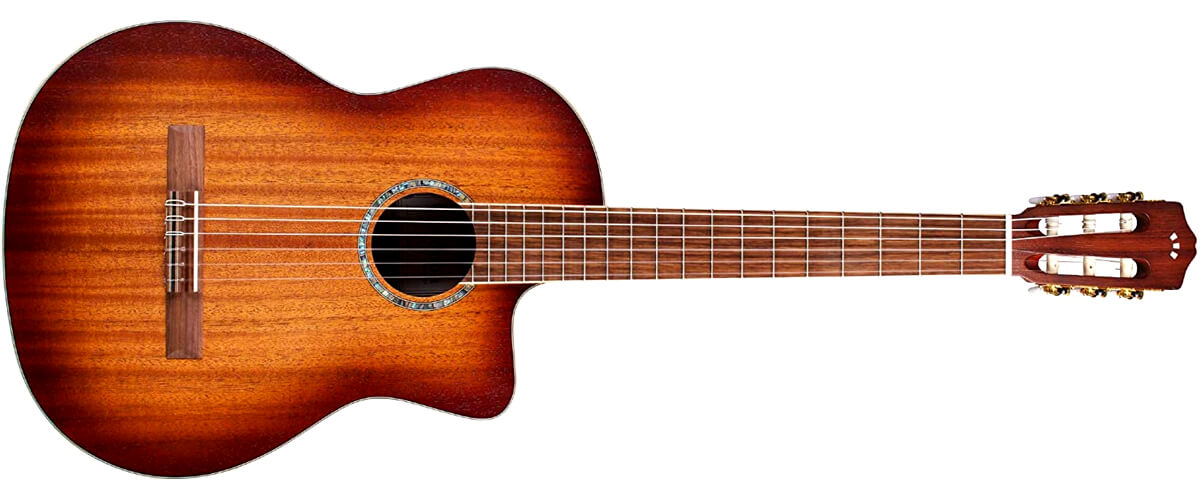
The guitar has a classic soft cutout on the body, making it very comfortable to play, and a right-handed orientation. But what's really amazing about its price point, I would point out, is the wood the manufacturer used. Mahogany is considered the optimal wood for acoustic guitars, and here it's made of a one-piece top, sides, and back. So the tone articulation is great. The Satin Polyurethane finish looks chic in the Edgeburst color, and the Abalone Rosette and bridge from Pau Ferro complete the look.
Neck, fingerboard, headstock
The Cordoba C4-CE has a slightly thinner fingerboard, C-shaped and 50mm wide. This design fits perfectly in a hand of any size, so it will suit players with small hands and thin fingers and provide easy access to the upper register. The fingerboard material is also Mahogany with a Satin Polyurethane finish, so my hand moved through it quickly and easily without encountering any obstacles.
The scale is 25.5 inches long and has 19 Pau Ferro overlays. This material is often used in inexpensive models and has proven to be a good choice. Although, of course, it loses out to natural competitors over time. And yet, here, too, the manufacturer surprised by placing a nut and saddle made of Bone on the fingerboard, which is usually an advantage of expensive guitars.
The Cordoba Gold pegs with mother-of-pearl buttons are not the highest quality, yet I can't say anything bad about them. They are soft and hold the tuning well.
Pickup system
This model is equipped with electronics and will please those who like to use an amplifier. The Fishman Sonitone cartridge-mounted preamp (Piezo configuration) with 2-band EQ provides a clean, rich acoustic sound. The Fishman system is used in the famous Epiphone Hummingbird Studio. So with this guitar, you can safely perform on stage or use it to record your playing.
Sound quality
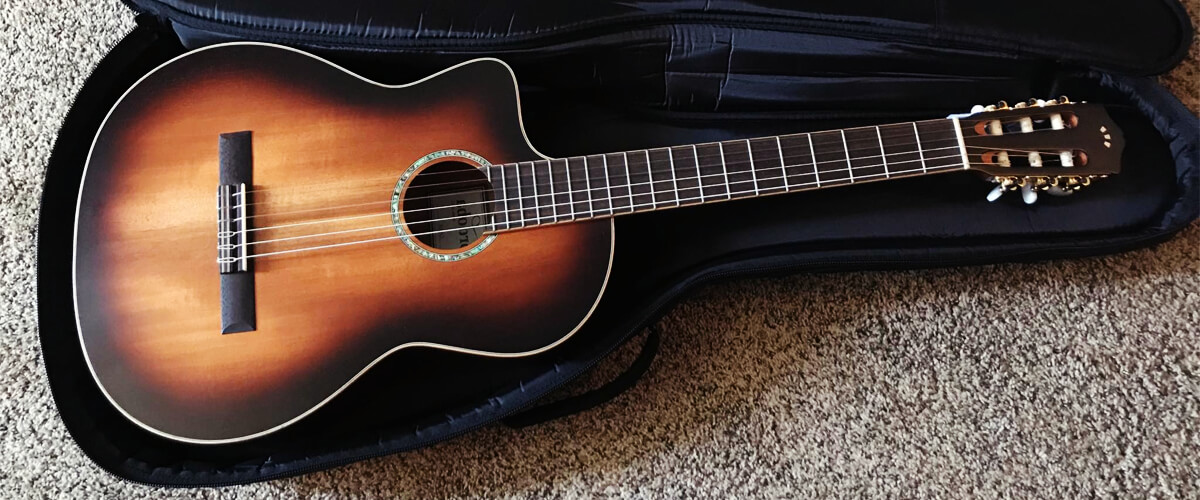
It is not difficult to guess that Cordoba C4-CE sounds excellent. For its segment, it is an excellent representative of the price/quality ratio, with options that you will not find in other models. The mahogany does its job, and the rounded surround sound envelops with its warmth and softness. I was really impressed with this model, and it turned out to be quite versatile for a classic. It sounded good on jazz and blues, and finger playing was easy, thanks to the Savarez Cristal Corum high-tension 500CJ strings that came with it.
When using Fishman electronics, I got bright, clean notes with no impurities, although you must remember that acoustic guitars' bass is not as deep. It is because the guitar does not sound like a drum.
Key specs
- Scale, in/cm: 25.6/65.
- Frets: 19.
- Fretboard radius, in/cm: 9.1/24.1.
- Type: acoustic/electric.
- Body material: mahogany.
- Neck material: mahogany.
- Neck joint: glued-in.
This model would excel as a classical acoustic fingerstyle guitar. Unlike the other guitars on display, it has a Mahogany Top but a standard Scale Length of 25.6″. But like the Yamaha C40II, it has a wider Nut Width of 2″ for easier fingerstyle playing. The instrument delivers an excellent warm surround sound with a versatile range and is well-priced for its qualities.

